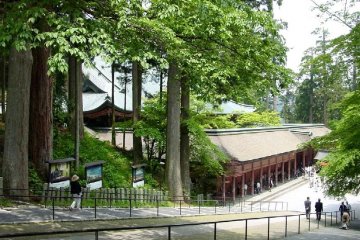

Enryaku-ji Temple, located on Mount Hiei in Otsu, overlooks all of Kyoto from its serene mountaintop. The temple was founded in 788 in the early Heian period by Saicho, who brought the Tendai sect of Buddhism from China to Japan. He is one of the most important monasteries in Japanese history.
The main hall at Enryakuji is undergoing a ten-year program of renovations that began in 2016. The main hall itself can still be entered, though it is largely covered with scaffolding through the renovation project. More >
Note the opening hours vary by location within the temple.
At its peak, the Enryaku-ji Temple had up to 3,000 sub-temples and a powerful army of martial monks, who often got involved in power struggles with other monasteries and political leaders.
Oda Nobunaga attacked, demolished and killed most of Enryakui's buildings in 1571 in order to eliminate all potential rivals and unite the country. Hence, most of today's temple buildings date from the early Edo period when the Enryaku-ji Temple was rebuilt.
Mount Hiei can be accessed from the Kyoto-side by Eizan Cablecar or from the Shiga-side by Sakamoto Cablecar. The Sakamoto Cablecar operates year-round, while the Eizan Cablecar does not operate during winter. After leaving the cable car, there is a clearly marked path that leads to Enryaku-ji temple.
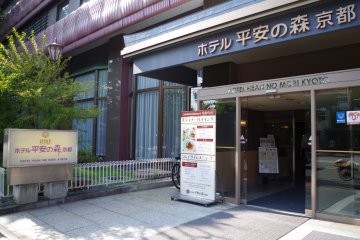

โรงแรมตั้งอยู่บนเนินเขาของเมืองฮิกะชิยะมะ มาพักผ่อนในสถานที่อันสงบและสะดวกสบายท่ามกลางที่สวนญี่ปุ่นที่สวยงาม
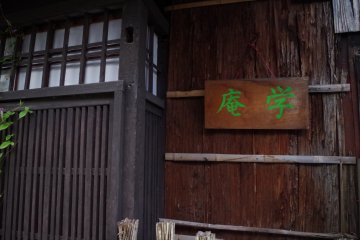
ใช้ชีวิตเหมือนขุนนางยุคเอโดะที่ไคโคอันในโอกาซากิ ฮิกะชิยะมะ เกียวโต

ในบางครั้งในระหว่างที่เราท่องเที่ยว เราอยากจะแวะชมสถานที่หลายๆ แห่งในช่วงเวลาที่จำกัด และการท่องเที่ยวแต่ละครั้งเราต้องวางแผนใช้จ่ายอย่างประหยัด ต้องเสียเงินค่าที่พัก ค่าโดยสาร ค่าเข้าชมสถานที่ และยังต้องเผื่อเงินไว้สำหรับค่าอาหารการกิน หากคุณมีแผนท่องเที่ยวหรือกำลังท่องเที่ยวในเมืองเกียวโตและที่อื่นๆ ในญี่ปุ่น ฉันขอแนะนำร้านนะคะอุ (Nakau) ร้านอาหารจานด่วนราคาประหยัด แต่รสชาติดี และที่สำคัญอิ่มท้อง เปรียบได้กับร้านข้าวแกงที่เมืองไทย

MAMEZEN SOBA (豆禅) ราเม็งเกียวโตสูตรน้ำเต้าหู้ อร่อยถึงเครื่อง สไตล์เบาๆ

LOVES BAGEL (Kyoto) เบเกิ้ลร้อนๆ ... เสิร์ฟด้วยรัก

Shugakuin Imperial Villa, located on the northeastern outskirts of Kyoto City, is a stunning complex of traditionally designed buildings and gardens interwoven into paddy fields. It was constructed from 1655 to 1659 by Emperor Gomizuno and presently, is managed by the Imperial Household Agency. The complex features three sections–the Upper, Middle, and Lower Villas–which are connected by tree-lined pathways. Between the villas, the majority of the land is designated as paddy fields and is still cultivated by local farmers today. The most celebrated characteristic of the villa is its gardens. Each section has its own exquisite landscaping that utilizes the Shakkei method of gardening. This process integrates the surrounding scenery into the garden’s design for a more dynamic and three-dimensional viewing experience. The gardens are especially popular in spring when the cherry blossoms and seasonal flowers are in full bloom, and in autumn when the surrounding mountainscape turns fiery. The Upper Villa’s Rin’untei Pavilion is also a noteworthy spot as it offers lovely views of Yokuryūchi pond, Kyoto City, and surrounding naturescape. Although you cannot enter buildings, some are left open so you can have a peek at their tatami floors and beautifully painted panels. In order to enter the villa, you must submit an application and join a guided tour. You can register online or in person. Make sure to have your passport or a government-issued ID on hand. Same day registration is permitted but is run on a first-come-first-served basis. The tour lasts about an hour and 20 minutes and includes visits to all three villas. Although the tour is only available in Japanese, the facility offers audio guides in English, Chinese, French, Korean, and Spanish free of charge.
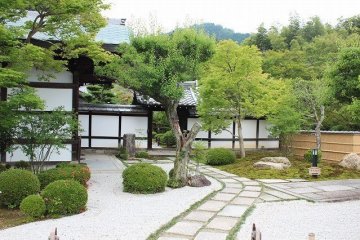
Enkō-ji, is a Zen Buddhist temple located near the Shugakuin Imperial Villa at Sakyō-ku, Ichijo-ji, Kotani-cho, in northeast Kyoto, Japan. It is famous for its fall foliage and Suikinkutsu. [Wikipedia]
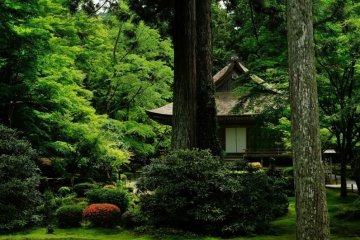
Sanzen-in is a Tendai school monzeki temple in Ōhara, Kyoto, Japan. The Heian period triad of Amida Nyorai flanked by attendants is a National Treasure. Sanzenin Temple is the main attraction of the rural town of Ohara, which is located about an hour north of central Kyoto. [Wikipedia]